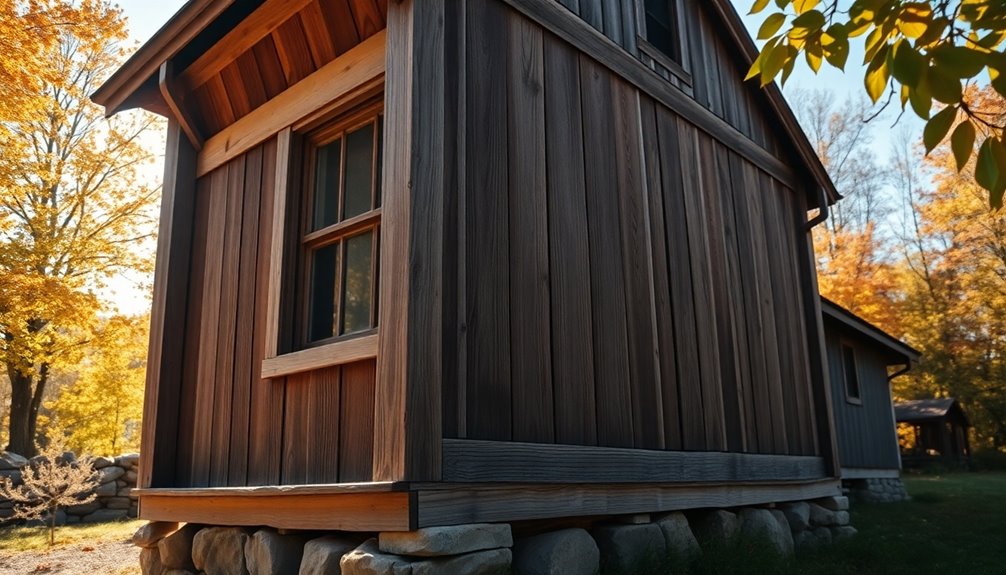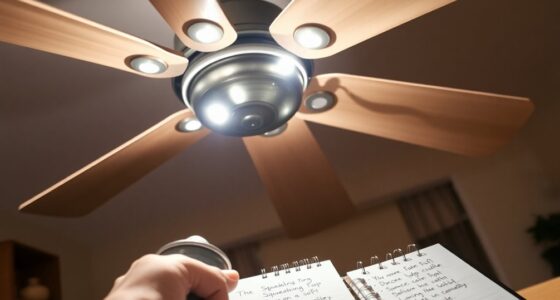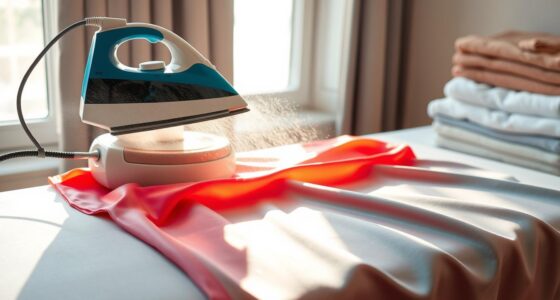Wooden frame houses can last over 100 years, and some even exceed 200 years with proper care. Their longevity hinges on quality construction and ongoing maintenance. If you choose durable hardwoods and manage moisture effectively, you can prevent rot and pest issues. Regular inspections and timely treatments are essential for spotting potential problems early. While the initial investment might be higher, the long-term savings on maintenance and energy costs make timber homes a smart choice. If you're curious about maximizing your home's lifespan and understanding best practices, you'll find even more valuable tips ahead.
Key Takeaways
- Timber frame homes can last over 100 years, with proper maintenance potentially extending their lifespan beyond 200 years.
- Historical examples show timber structures from the mid-1700s in North America and early 1100s in Europe still standing.
- The quality of construction and materials directly influences longevity and resistance to warping, cracking, and pests.
- Regular maintenance, including moisture management and annual inspections, is essential for preventing decay and extending the life of wooden homes.
- Investing in quality construction reduces long-term maintenance costs and enhances energy efficiency, contributing to overall durability.
Typical Lifespan of Timber Frame Homes

When you consider the lifespan of timber frame homes, you'll find that they can last over 100 years, with some even exceeding 200 years with proper care.
Historical examples, like structures from the mid-1700s in North America and the early 1100s in Europe, showcase this remarkable durability.
The lifespan of a timber frame largely hinges on the quality of construction and your ongoing maintenance efforts. Regular inspections are key, as environmental impacts like moisture levels and pests can compromise durability.
Fortunately, advances in modern wood treatment and construction techniques have enhanced the longevity of timber frame homes beyond traditional expectations.
With the right attention, your timber frame can stand the test of time and history.
Factors Affecting Longevity
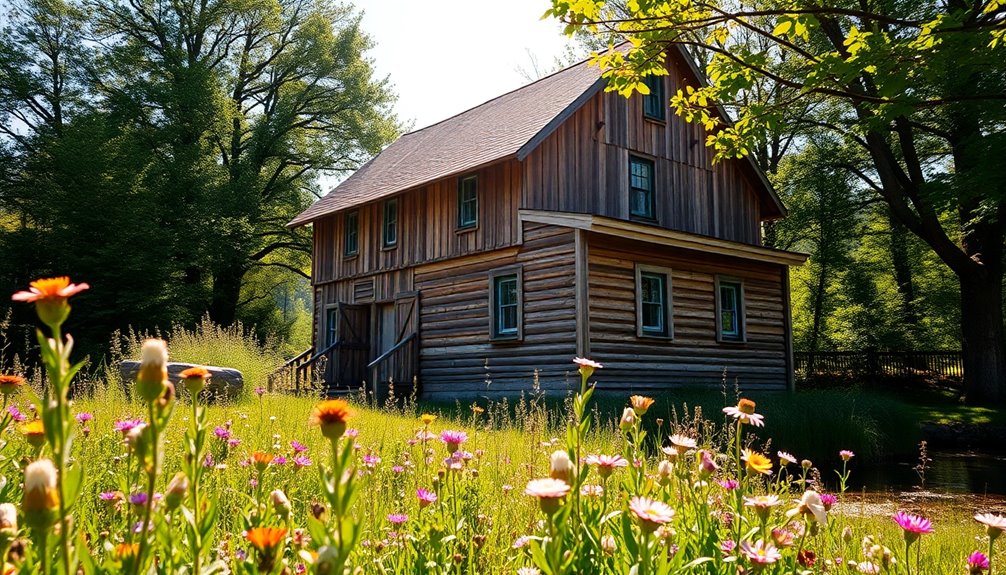
Several factors influence the longevity of wooden frame houses, making it vital to take into account these elements during construction and maintenance.
To guarantee your home stands the test of time, consider the following:
- Quality materials: Using high-quality hardwoods over softwoods can greatly extend lifespan.
- Regular maintenance: Conduct timely inspections and repairs to potentially increase longevity beyond 100 years.
- Moisture content: Proper moisture management is essential; excess moisture can lead to rot and infestations.
- Environmentally friendly practices: Choosing sustainable materials and methods can improve durability while protecting the planet.
- Proper storage of materials during construction can also prevent damage and ensure that the quality materials used contribute to the house's longevity.
Importance of Quality Construction

When building a wooden frame house, the role of skilled builders can't be overstated; their expertise lays the foundation for longevity.
You'll find that regular maintenance practices not only preserve your investment but also enhance long-term cost efficiency.
Prioritizing quality construction from the start pays off in durability and peace of mind.
Role of Skilled Builders
While the lifespan of wooden frame houses largely depends on the quality of their construction, skilled builders play an essential role in ensuring durability and longevity. Their expertise directly influences how well your home withstands the test of time.
- They use high-quality materials and precise techniques.
- Attention to detail in joinery enhances structural integrity.
- Quality construction practices help manage moisture and prevent wood rot.
- Regular inspections by skilled builders identify issues early, aiding maintenance.
Impact of Maintenance Practices
Although the quality of construction lays the groundwork for a wooden frame house's longevity, your ongoing maintenance practices can make all the difference.
Regular maintenance is essential for spotting potential issues like moisture damage and pest infestations before they lead to structural damage. Keep the moisture content in wood below 19% by ensuring proper sealing and ventilation.
Conduct yearly exterior inspections and reinforce seals around foundations and siding to minimize pest risks. Additionally, adhering to a maintenance schedule that includes applying protective finishes every five years will help preserve the wood's integrity.
Long-Term Cost Efficiency
Investing in quality construction for your wooden frame house isn't just about aesthetics; it can lead to significant long-term cost efficiency. By prioritizing initial build quality, you're setting the stage for a durable home that minimizes long-term repair costs.
Consider these benefits:
- Homes can last over 100 years with high-quality materials.
- Regular maintenance helps prevent costly repairs down the line.
- Durability reduces overall energy expenses.
- Early investment mitigates risks like moisture damage and insect infestations.
- A well-constructed home promotes emotional well-being by creating a stable and inviting environment.
Maintenance Best Practices
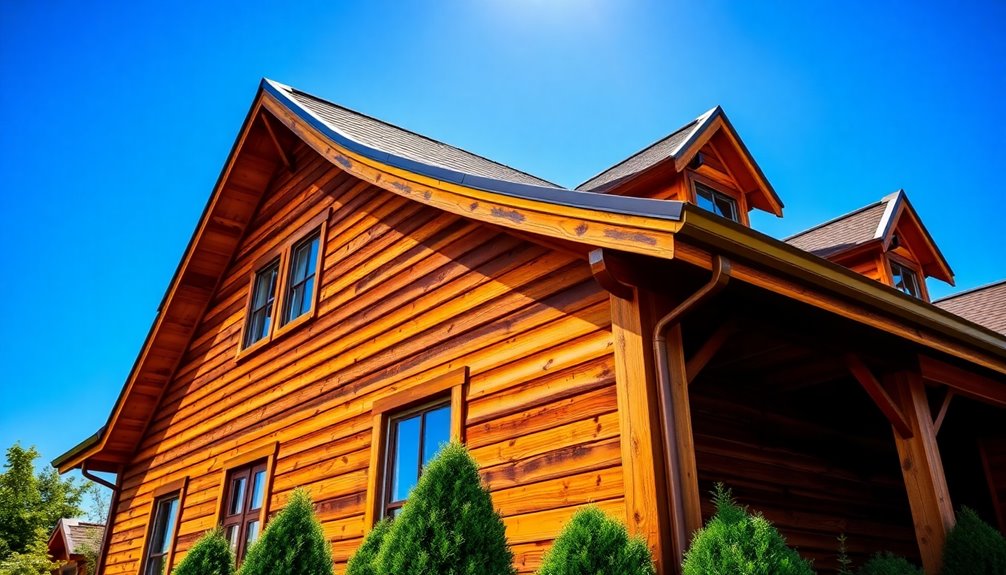
Regular maintenance is essential for maximizing the lifespan of wooden frame houses. You should conduct annual inspections to spot early signs of decay, insect infestation, or structural issues, preventing costly repairs later.
Treat your exterior cladding every five years with microporous paint to manage moisture effectively. Keeping the moisture content in the wood below 19% is vital, so guarantee proper sealing and ventilation during construction and maintenance.
Additionally, maintain drainage systems to manage water runoff and avoid moisture-related problems. Implement pest control measures by sealing around foundations and routinely checking for signs of insect activity.
Following these maintenance best practices will help protect your home and extend its life considerably.
Moisture Damage Prevention

To guarantee the longevity of your wooden frame house, it's crucial to prioritize moisture damage prevention. Keeping the moisture content in wood below 19% can help you prevent mold and wood rot, which can severely compromise your home's integrity.
Here are some key steps to take into account:
- Ensure proper sealing during construction to prevent moisture entrapment.
- Implement UV protection methods to safeguard against sun deterioration.
- Install humidity control systems to manage air quality and moisture levels.
- Conduct regular inspections and maintenance to identify and resolve moisture issues early.
Pest Control Strategies

To keep your wooden frame house safe from pests, regular inspections and maintenance are key.
Check for signs of damage and seal any gaps around the foundation and siding to prevent infestations.
Staying proactive not only protects your home but also extends its lifespan.
Regular Inspections and Maintenance
While pests can silently wreak havoc on wooden frame houses, consistent inspections and maintenance can help you catch problems early.
By focusing on these key areas, you'll protect your investment and extend the lifespan of your home:
- Conduct yearly exterior inspections, especially where wood meets the ground.
- Watch for signs of pest damage, like tiny holes or frass.
- Use borate-based products for regular treatments that shield timber from insects.
- Guarantee proper ventilation and humidity levels to deter pests and prevent wood rot.
Effective Sealing Techniques
Regular inspections and maintenance lay the groundwork for effective sealing techniques that can greatly enhance pest control in wooden frame houses.
Start by applying high-quality caulking around windows, doors, and other entries to form a barrier against moisture and pests. Foam sealants in gaps and cracks also help prevent insect entry, especially in foundations and siding.
Don't forget to implement weather stripping to reduce air leaks, which can invite unwanted pests. Regularly inspect and reseal joints and seams to maintain seal integrity and protect against structural damage.
Finally, verify proper drainage and good ventilation to prevent moisture buildup, which can attract pests and lead to wood rot. These steps are essential for extending the lifespan of your home. Additionally, ensure compliance with local fire safety regulations, as these can further protect your wooden structure from potential fire hazards.
Economic Considerations for Homeowners

Although investing in a timber frame home might seem costly at first, understanding the long-term economic benefits can change your perspective.
While initial construction costs can be higher than traditional homes, their long-term durability often leads to fewer maintenance and repair expenses.
Plus, the energy efficiency of timber frame homes can greatly lower your heating and cooling bills.
Here are some key economic considerations for homeowners:
- Reduced maintenance costs due to long-lasting materials
- Lower utility bills from enhanced energy efficiency
- Potential tax incentives or rebates from sustainable practices
- Unique insurance and appraisal options that could lower premiums
Frequently Asked Questions
What Is the Life Expectancy of a Wood Frame House?
When you consider the life expectancy of a wood frame house, it typically ranges from 100 to 150 years, depending on several factors.
The type of wood, environmental conditions, and craftsmanship all play crucial roles. If you keep up with regular maintenance, including inspections and repairs, you can greatly extend your home's lifespan.
Plus, modern treatment technologies can further enhance durability, ensuring your wood frame house lasts well into the future.
Can a Wood Frame House Last 200 Years?
Yes, a wood frame house can last 200 years if you maintain it properly.
Regular inspections and timely repairs are essential to prevent issues like decay and insect infestations. You'll also need to manage moisture and environmental conditions effectively.
Investing in quality craftsmanship, such as using strong joinery techniques, contributes to its durability.
With the right care, you can enjoy a long-lasting home that stands the test of time.
What Are the Disadvantages of a Wood Frame House?
Imagine living in a beautiful wooden frame house, only to face the reality of its drawbacks.
You've got to deal with moisture issues that can lead to mold and rot, and pests like termites can threaten the structure.
Maintenance feels never-ending, and neglecting it can cost you dearly.
Plus, compared to brick or stone homes, wood frames usually don't last as long.
You'll need to stay vigilant to keep it standing strong.
Do Wooden Houses Last Longer Than Concrete?
Yes, wooden houses can last longer than concrete ones, especially with proper maintenance.
While wooden structures can exceed 100 years, concrete typically ranges from 50 to 100 years.
You'll find that wood offers better resilience against certain weather conditions, but it's essential you manage moisture effectively to prevent decay.
With diligent care, you might discover that a well-maintained wooden home outlasts its concrete counterpart, particularly in favorable climates.
Conclusion
To sum up, while timber frame homes can last anywhere from 50 to over 100 years, your choices play a huge role in their longevity. By prioritizing quality construction, regular maintenance, and effective moisture and pest control, you can greatly extend your home's lifespan. There's a theory that proper care can even enhance a home's resilience over time. So, invest in your timber frame to not only protect your investment but also create a welcoming, lasting environment for years to come.
